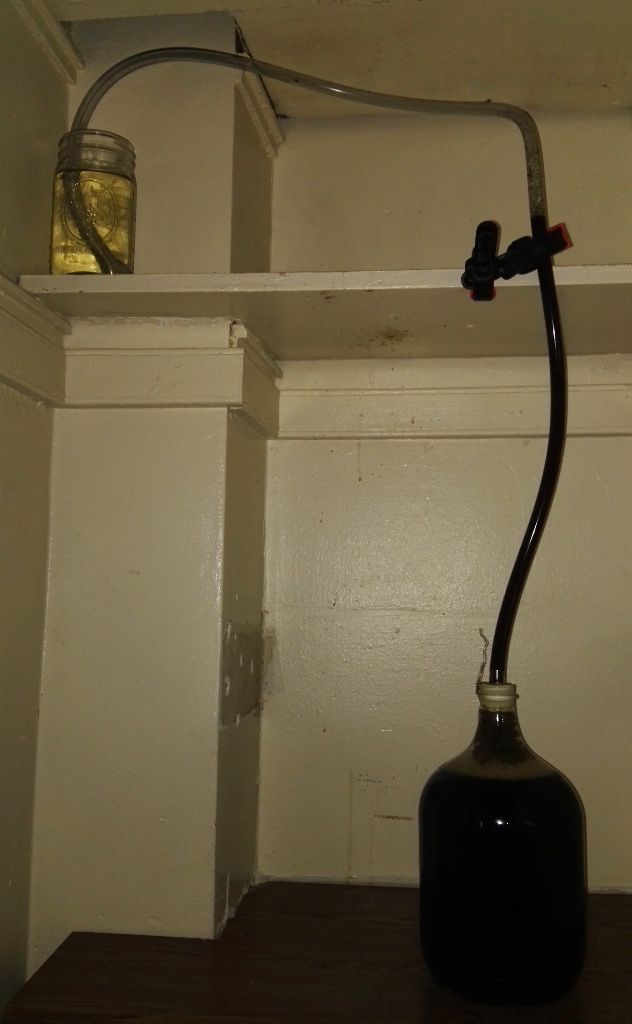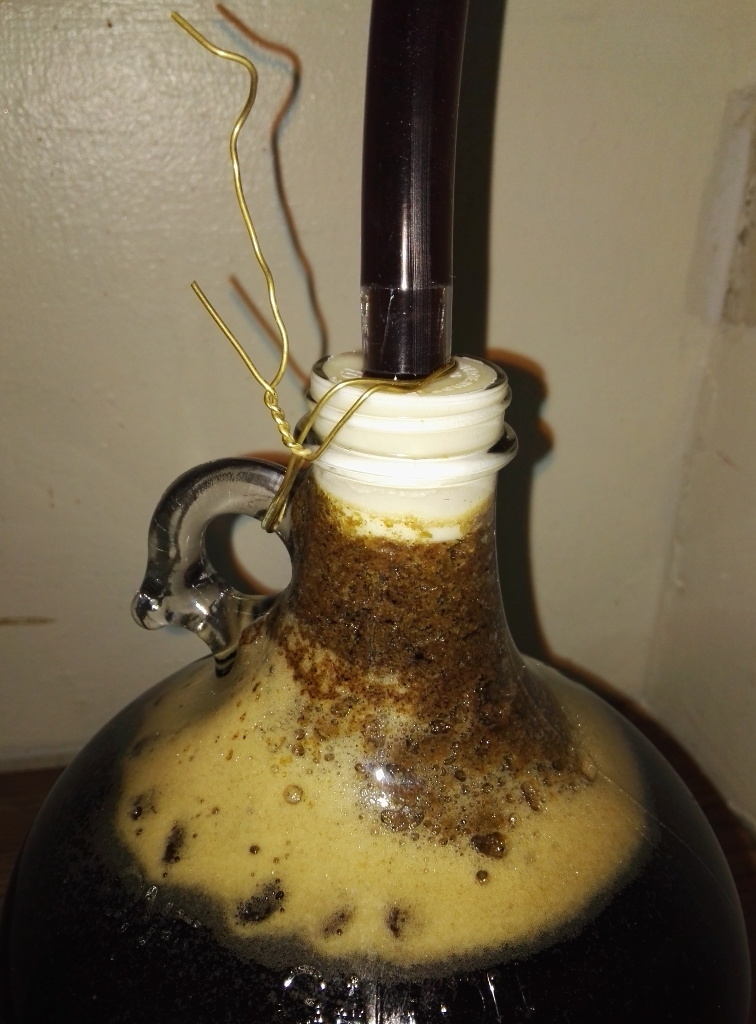PsychoBiter
Well-Known Member
- Joined
- Feb 17, 2016
- Messages
- 158
- Reaction score
- 31
Don't let your dog eat hops of any kind or drink the decanted liquid from a starter.

Agreed, I cold crash and gelatin fine a week to 10 days after brewing. Then generally keg it a couple days later. I'm usually in the keg inside 14 days.
I've only been doing all grain since June but I've learned a lot.
I think my biggest take away is that you don't need to be scared of wrecking a batch, it's surprisingly hard to do.















Use a long blowoff tube so that you do not lose beer during an over active fermentation. Use the tube to create a high arch so that the brew goes up a bit but will come back down into once fermentation slows down. You went through so much work to create your beer, losing 1/4 of it through a blowoff tube totally rots. I attached pictures of my setup. I also tied down the stopper bung thing with wire so it would not get blown out due to the over active fermentation.
I haven't tried your set-up, but have read that the star san bottle being higher than the fermenter will let it siphon back into the fermenter, depending on circumstances.
Maybe his thinking was to elevate the blowoff so that whatever beer goes up will eventually run back down into the fermenter. Not sure I'd want blowoff to go back in. That falling column of blowoff beer will pull liquid from the blowoff jar back down with it, as Miraculix noted. Once that happens, you have a siphon going the other way and all the liquid from the jar will go into the fermenter.

Maybe his thinking was to elevate the blowoff so that whatever beer goes up will eventually run back down into the fermenter. Not sure I'd want blowoff to go back in. That falling column of blowoff beer will pull liquid from the blowoff jar back down with it, as Miraculix noted. Once that happens, you have a siphon going the other way and all the liquid from the jar will go into the fermenter.
I thought my first brew was way too bitter, but I bottled it anyway and after a 3-4 weeks it was way better, so don't be too quick to dump a beer.
If you brew in a cold climate, (40F or below at night) you don't need a chiller just brew in the evening and set the pot outside with a lid on. In the morning it will be ready to dump into the fermenter.
Don't worry about kettle trub, it will all settle out.
I used to siphon from the kettle to the fermenter, now I just dump it all in, the wort get aerated and the beer comes out fine.
Don't worry about hot side aeration.
You don't need an oxygen tank or an aeration stone.
You don't need to make a yeast starter, just make a 2.5 gallon batch of beer, and then re-use that yeast for a bigger batch. The exception to the above is when I'm going to "wake up" yeast that has been stored for a while.
Learn how to save your yeast, you don't have to "wash" it. Just pour the slurry into a sanitized jar and keep in the refrigerator.
Check with the bakery section in your local grocery store, frosting comes in food safe buckets and can often be gotten really cheap.
Keep Star san in a bucket, you can use the same Star San over and over many times, the same with PBW.
You don't need an expensive rig to make wort. You don't need a pump, tri-clamp fittings, a sight glass on the kettle or many other things that are sold as essential.
Its OK to make small batches, although to me, 1 gallon seems like a lot of work for all the time involved. Making 2.5 to 3 gallon batches is sensible for a moderate drinker and allows you to brew often and have a lot of variety.
Brew clone recipes of top rated beers to get some experience before designing your own recipes.
Buy hops in bulk and keep in the freezer.
Look on craigslist for used brewing equipment, there's always something on there, but you need to know current prices, some people seem to try to charge full price for used gear.
Keep good notes and don't worry if you make mistakes, it will still be beer.
That reminds me, people should watch this. It's a walkthrough of an 18th century brewery.
https://youtu.be/NLxNWWeEAlw
here's a tip for asking for feedback on your recipe here on HBT:
it will make beer
I suggest learning to brew one beer style consistently that actually taste good before experimenting with other ingredient like fruit and spices.